Today, 9 in 10 home buyers rely on the internet as one of their primary research sources when looking for a new house.
This is too big to ignore! Your buyers are online, searching their way through homes to find the perfect one. The question is - are you capturing this massive opportunity? Are you helping them on their journey to find a new home?
In this article, we will show you how to create a real estate website that adds value to real estate buyers. We will cover five strategies used by industry leaders to generate and nurture leads that have proved to boost agency revenues.
Steps to Build a Real Estate Website
Step 1. Ensure enough inventory
The primary reason for a buyer to visit your site is to find a new home. So, if your database of listings is too small, it will leave many potential clients disappointed.
This is why figuring out where you’ll get your listings from is one of the primary challenges you need to solve when planning to create your own real estate website.
Here are the most common sources:
- Your own client database
- MLS
- Aggregator websites like Zillow, Realtor.com, and Trulia
Your own client database
The first source of listings for your website is, obviously, your own database of leads. This is, of course, the most valuable type of inventory, as it can give you the best profit margin. And you have also already made a commitment to these seller clients to sell their properties. Thus, it’s important to make sure that your own listings are showcased on your website, with timely updates.
In general, listing only the properties of your own clients will not be enough for your audience. How many are you likely to be able to showcase at one time? 40-100 listings? With MLS or Zillow integration, you could double or triple that number.
Perhaps it may also be wise not to include listings from third-party resources (like MLS) that would directly compete with your own inventory.
Here is one way to do it:
“When a buyer searches a property on our website, he will first see our own listings. If, after going through them, none match his criteria, the system will upload more listings from other sources, including MLS.” Ksenia Litvinova, Coordinator at real estate agency Ramirezinmo.
MLS
Thus, the second quite common source of listings is MLS (Multiple Listings Service). These are databases of property listings that local real estate associations collect. Most likely, you’ve already tapped into this resource by both submitting listings for your sellers and also finding listings for your buyers. But do you show MLS listings on your website? If you do, are you leveraging the full potential of this resource? Keep reading to learn more about your options.
To display MLS data on your website, you will need to use one of the IDX methods, which can be tricky. IDX refers to Internet Data Exchange, which refers to websites displaying MLS data in accordance with MLS rules and policies.
There are several ways to implement IDX on your website:
- iFrame — a search window/HTML element that agents can insert into their websites.
- FTP — a standard for exchanging data files among MLS and other systems (like agent websites).
- RETS (Real Estate Transaction Standard) — a framework used to facilitate data exchanges in the real estate industry.
- RESO Standards (RESO Data Dictionary and RESO Web API) — the latest standards for presenting and accessing MLS data.
It is relatively easy to install an IDX iFrame on your website and syndicate the MLS feed. However, with this method, you will have no control over how the listings are displayed, as you are basically showing a part of somebody else’s website on your own. This also means that the listing data will not be indexed by Google, causing you to lose traffic. In addition to that, using IDX is known to slow down websites.
With FTP based IDX, the listing data will actually be transferred to your website. That is why you will be able to customize it, as well as attract organic traffic thanks to SEO. One of the downsides of this approach is that your listings will be updated only in lengthy intervals of time set by your MLS, for example, once every 12 hours. The FTP approach can also be very challenging and costly, especially if you ever wanted to syndicate several MLS feeds on your website, as every MLS uses their own way of presenting data.
RETS also gives you control over how the data is displayed, as well as all the SEO benefits, and more. At the same time, it is easier and less costly to implement than FTP and, with RETS, your data will be updated as often as once every hour.
Recently, the Real Estate Standards Organization (RESO) issued new standards for displaying and exchanging MLS data. This is an attempt to finally standardize all of the MLS systems across the country for free and painless data exchange. The standards include the RESO Data Dictionary, which defines terms and data structures that every MLS should use. And it also offers RESO Web API which can be used for websites and apps to gain access to MLS data via RESTful technology. Thanks to its efficiency and ease of use, this method is said to revolutionize the industry. RESO urges everyone (MLSs, brokers, and tech vendors) to ditch the old IDX methods in favor of the new ones.
| Ability to customize data | Freshness of data | Extensive search options | Ease of use | |
| iFrame | **** | ***** | ||
| FTP | ***** | ** | *** | |
| RETS | ***** | ***** | *** | ** |
| RESO Web API | ***** | ***** | ***** | **** |
Aggregator websites like Zillow, Realtor.com, and Trulia
In addition to the above-mentioned sources of data, you can also get your listings from real estate aggregators like Zillow, Trulia, and Realtor.com. All of these websites offer APIs, which will make it easy to integrate your website and receive the necessary data. This can be a good solution if you don’t have access to any MLS database yet. But, even if you do, you can still benefit from integration with websites like these. For instance, with Zillow API, you will get access to data about neighborhoods and neighborhood boundaries, which your visitors can use in property searches (more on that, below).
As you can see, it is best to use several sources of real estate data on your website so you have enough inventory for your visitors to find what they need. Keep in mind, however, that where you get your listings should not be of concern to your visitor. Your visitor should have a smooth and seamless experience when searching for a property on your website, regardless of where the data comes from. This means that it is your job (or the job of your web developer) to find an optimal way to present the combined data to users.
Step 2. Be searchable
What’s the point of having the largest property database, if no one can find anything? To attract leads, you need both enough inventory and a great search experience. This refers to both on-site searches, as off-site searches.
Off-site search
Your listings content should be indexed by Google so that potential buyers can discover you. We’ve already touched on this topic briefly, while discussing various IDX methods of MLS integration, above.
As you know, buyers will always start their search for a dream house using Google. Wouldn’t it be great if your listings showed up in this search? For this, each of your property listings must be presented on a separate SEO optimized page.
On-site search
When buyers get to your website, property searches will be the most important functionality for them. Thus, providing a robust search for your users can be a real dealmaker.
The basic search functionality you are likely going to need is:
- Geospatial search (by address, proximity)
- Search by attributes (price, home features, etc.).
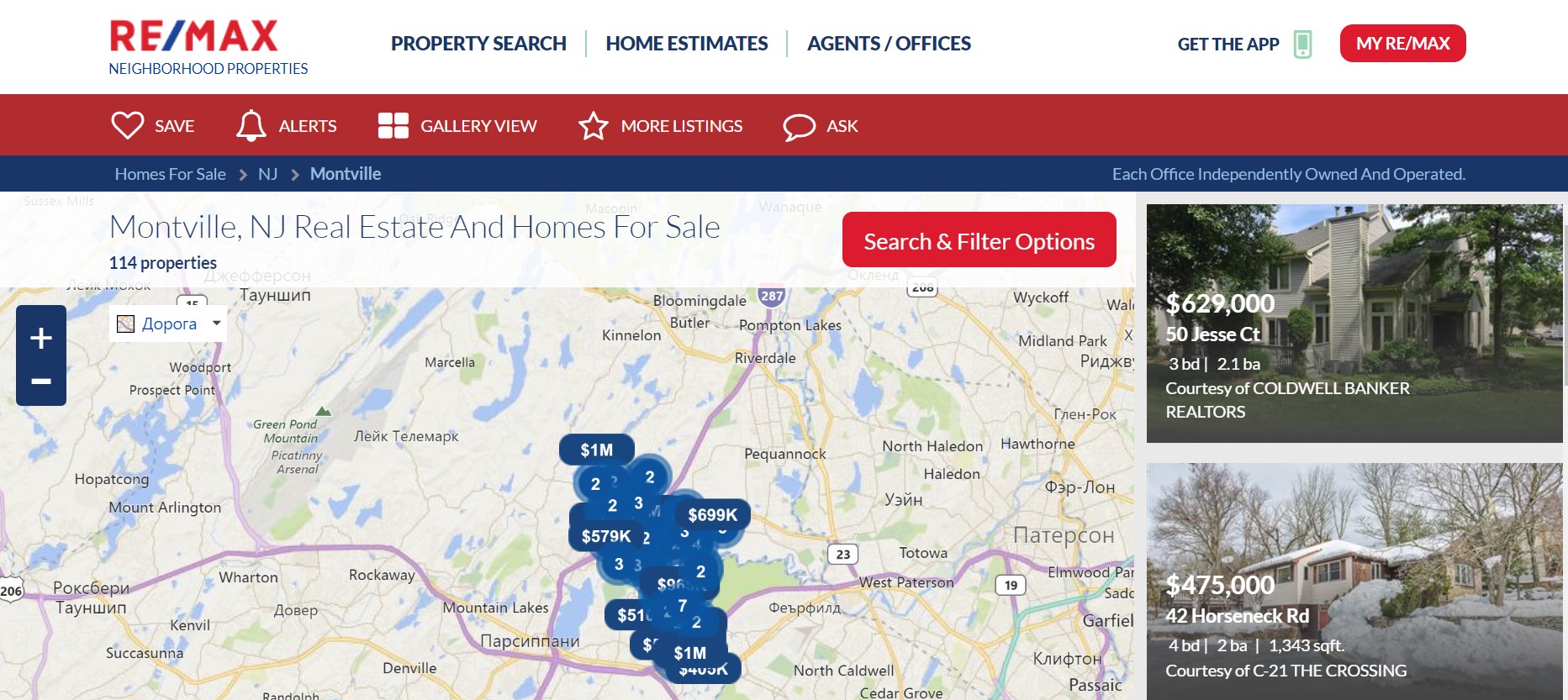
All of this should be facilitated by:
- Auto suggestions, so that your users didn’t have to type the entire address
- Fuzzy search (typos, misspellings)
- Spelling corrections.
And it should be fast. Buyers will have to perform multiple searches on your website to find something they like, and it would be unbearable having to wait for a minute or so on every search. Google doesn’t like slow websites, either, and always outranks slower sites for speedy ones.
You’ve probably already noticed how good of a job Zillow, Trulia, and other real estate search giants do in this regard. But you can do it even better. How do we know this? Because you have a secret advantage of knowing your audience and your region really well. You know what matters to your buyers in your particular area.
- Is it the proximity to schools, parks, or beaches?
- Is it the price?
- Is it about other certain features?
It is likely some combination of the above combined with something specific to your audience. For instance, if you are selling property in Manhattan, NYC, your buyers might be interested to know if there is a Doorman if dogs or cats are allowed, or whether there is an outdoor space. That’s what Compass has incorporated in their search.
Zillow, on the other hand, sticks to unified search options, as they operate nationwide.
Step 3. Present listings in a compelling way
What does a buyer expect to see when she opens a listing page? She wants to get an idea of what the house is like if it has what she needs, etc. How can you convey this information?
- With powerful visuals
- With relevant details
Also, the further away your clients are from you, the more emphasis you have to make on visuals. For instance, if most of your buyers are living elsewhere and plan to buy a property in your area, they probably won’t have the opportunity to look at the houses personally. This is often the case with vacation homes and investment properties.
Visuals
- HD photos
- Videos and live streaming
- Virtual tours
Property details
What does your buyer need to know about this property? Key details, property descriptions, amenities… Rely on your experience and the strong knowledge of your audience to come up with information about a property that is most important and relevant to your buyers.
For example, along with the standard information on its listing page, Compass also provides a list of nearby schools and a neighborhood map.
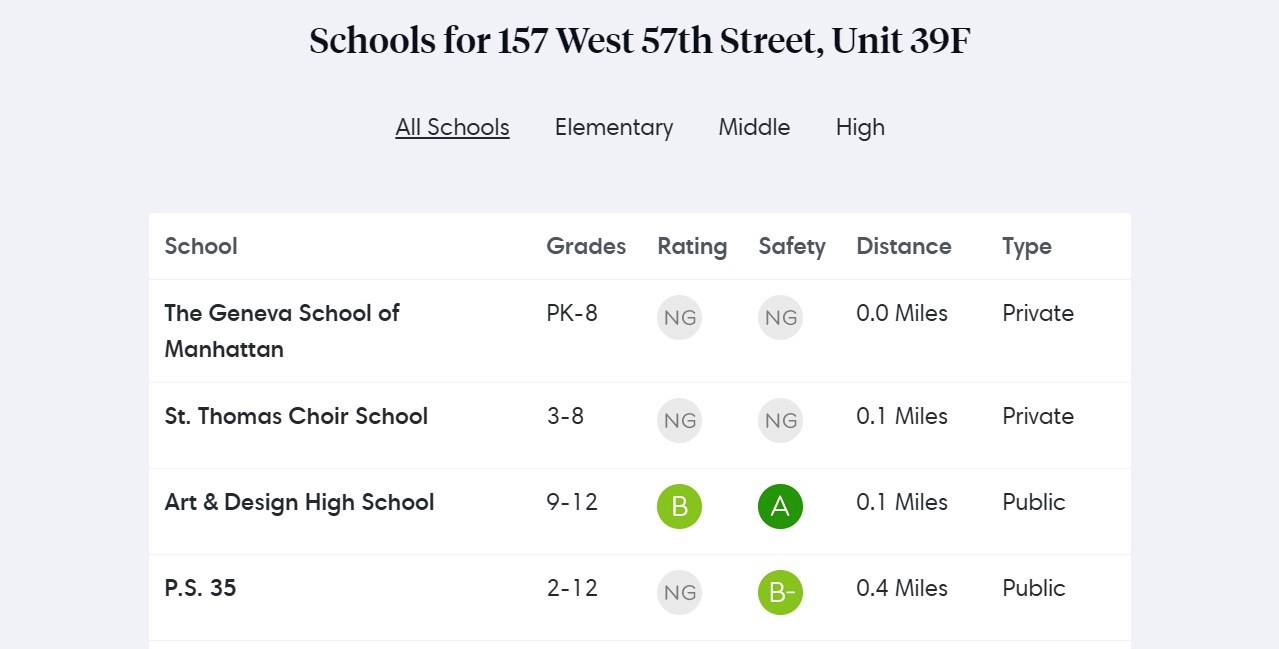
Step 4. Assist in property-shopping
Property searching is not a one-time deal. It is a long and tedious task that takes months, if not years, to complete. It involves searching, shortlisting, discussing with family members, going on tours, and more.
By helping your clients go through it, even in the early stages, you will stay top of mind, so that you will be the first one they’ll turn to when they are ready to take action.
Here is a list of ideas to get you started:
Home buying guides
Compile your best advice to buyers in a pdf ebook and post it for download on your website. This will not only position you as an expert but also help you compile an email list of prospects to work with.
Short-listing and monitoring
Let your buyers save the listings that they like so that they can later return to review and monitor them. Add functionalities that allow them to:
- Save
- Express how they feel about a listing
- Add notes
- Ask questions
- Set alerts
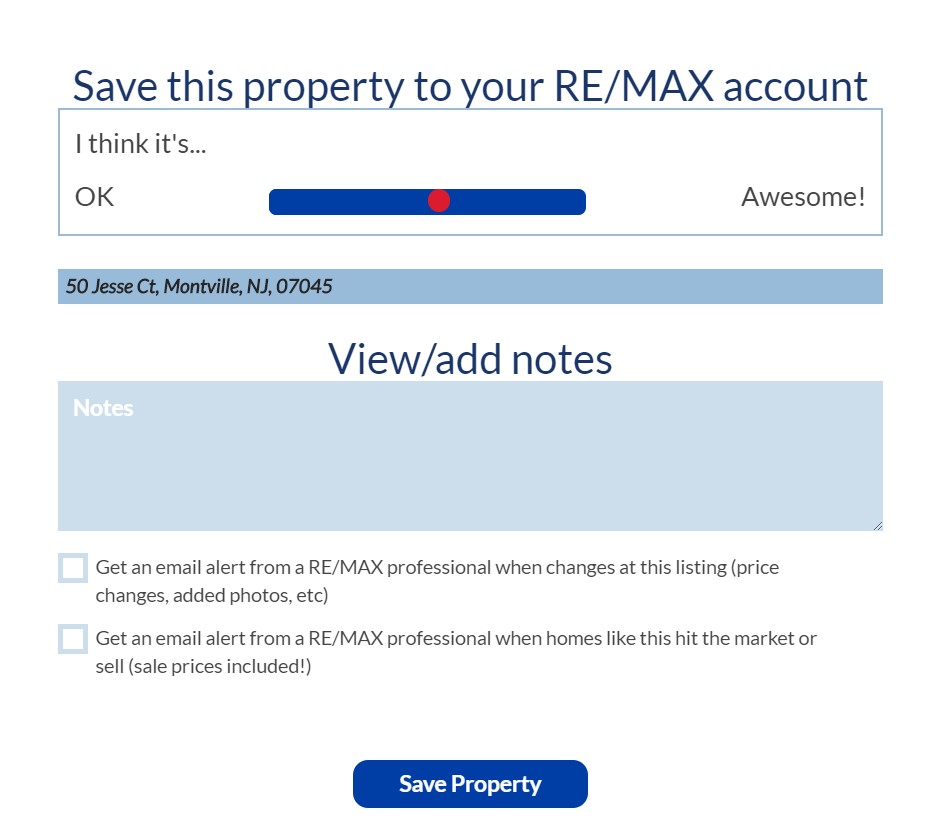
Allow for property-shopping collaborations
It is very likely that your buyers are not searching by themselves. They have husbands/wives/partners that also actively participate in the process. You can help them to collaborate by adding features, like:
- Invite others to be active in the property search
- Discuss listings
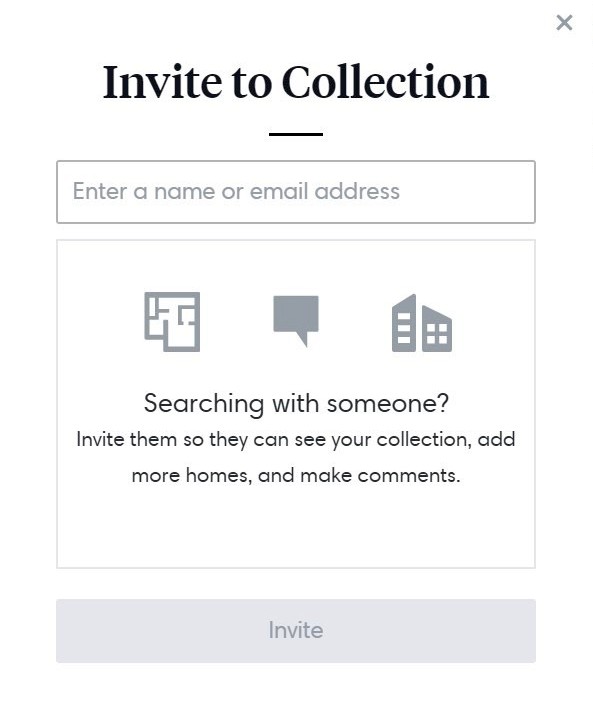
Help with calculations
Of course, the buying process involves a lot of calculations. ‘What can we afford?’ ‘How much will it cost us?’
This is why many real estate sites offer a variety of tools to help buyers with calculations. For instance, Century21 has the following calculators to help buyers make up their mind on properties and target prices:
- Mortgage Calculator
- Affordability Calculator
- Refinancing Calculator
- Amortization Calculator
- Renting vs. Buying Calculator
Scheduling home tours
The next logical step after creating short-lists will be to go on home tours. In this day in age, everyone is busy. Sellers of the properties are not always ready to show their houses, and buyers and agents have their own busy agendas. Picking dates and time slots that suit all the parties involved can be very time-consuming.
You can help with that, too. Here is how Redfin helps buyers schedule their tours.
On each listing page, buyers can review the dates that the property is available for a tour (already approved by sellers) and choose dates and times most suitable to them.
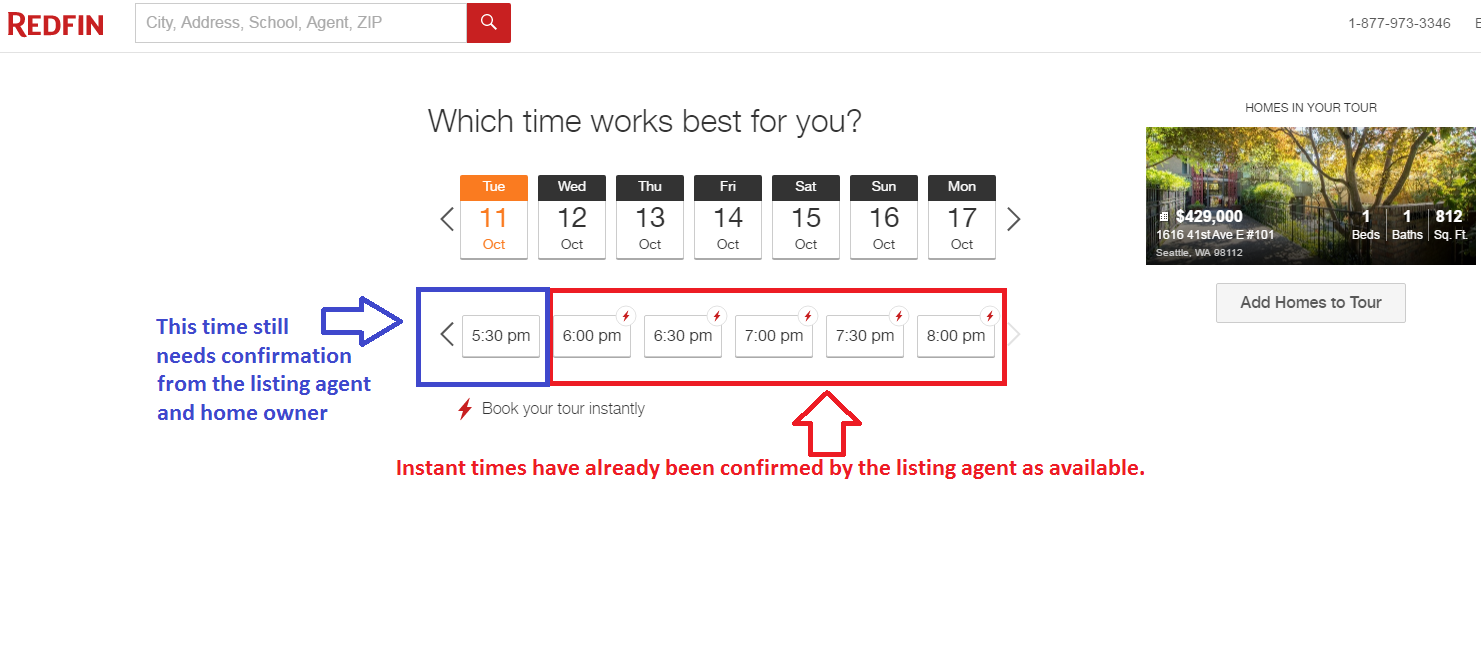
After that, buyers can add more houses to tour that day.

The whole system takes out a lot of headaches when tour planning, and makes everyone’s life easier.
Step 5. Provide a great mobile experience
Buyers conduct much of their research on the go and, thus, do so on their mobile devices. Needless to say, your website has to be optimized to work smoothly on mobile devices.
This will be good enough if your current ambition is for as many buyers as possible to discover you. However, if you also want to guide them through the entire real estate process and assist in property shopping, as described above, this might not be enough. Mobile websites, no matter how good, are still not as convenient for extensive frequent use as mobile apps.
Research shows that 87% of mobile Internet time is spent on apps. The reasons are obvious:
- ‘Mobile apps are more convenient’
- ‘Mobile apps are easier to use’
- ‘Mobile apps work when my phone is not connected’
- ‘Mobile websites often don’t look good on my phone’
That is why some agencies go the extra mile and develop mobile apps for their clients.
Think your real estate business can benefit from a mobile app but are afraid that it can cost a fortune? That’s not always the case.
There are several ways to develop a mobile app:
- Native development
- Cross-platform/hybrid development
- Progressive Web App development
The most costly of the three is native app development. The high costs come, mainly, from the necessity to develop an app for each platform: one for iOS and one for Android.
You can escape this if you choose the cross-platform/hybrid approach. In this case, you will need to develop only one app and, with minor adjustments, it will run on both iOS and Android devices.
There is also the third option of developing a Progressive Web App (PWA). This is quite an interesting solution. Not only does it run on all platforms (iOS and Android), but, also, with PWA you will have a website and mobile app all in one. That’s right, you don’t need to build your website and then develop an app, but, rather, you just need to build a PWA. Your buyers can discover it in their browsers when searching on Google or with a direct link. PWA will first act as a website and, then, with user consent, it will be added to their home screen and act like an app. Of course, this method does have both pros and cons, so you need to make sure it works for you.
What is the Average Price for a Real Estate Website at Greenice?
Here are the ballpark estimates of the costs of building a real estate website at our agency. These estimates are only for custom-built websites and apps (not WordPress) that are developed with PHP/LAMP technology stack (our team’s specialty).
|
Description |
Time to develop |
Cost |
|
|
Custom IDX website |
|
2-3 months |
$30,000 - $50,000 |
|
Custom IDX website with a portal for clients |
All of the above, plus:
|
4-6 months |
$40,000 - $60,000 |
How to Apply This to Your Business
If you plan to build your own real estate website, the first thing to think about is inventory. Where are you going to source your listings from? Will you have enough for your buyers to find what they are looking for?
There are several sources for listing data: your own leads, MLS, and integration with online aggregators like Zillow, Trulia, Realtor, and more. You will likely need to use some combination of those to get exactly what you need.
In addition to having a large property database, you also need to make sure it can be easily searchable by your buyers. For buyers to take action, you’ll need appealing content on your listing pages.
You can also become the guiding star for your buyers in their home-shopping journey long before they decide to contact any other agent. Help them to shortlist, monitor, and collaborate throughout the course of their property search.
The real estate website cost will depend on many factors, including the sources of listings data you choose and features you’d like to incorporate.
To sum it up — use a powerful blend of your unique local expertise and technology to lure buyers to your agency and beat the competition!
Don't hesitate to contact us with any technical questions and to get an estimate for your project.
Get a cost estimate for your real estate website.
Contact UsRate this article!
Not rated

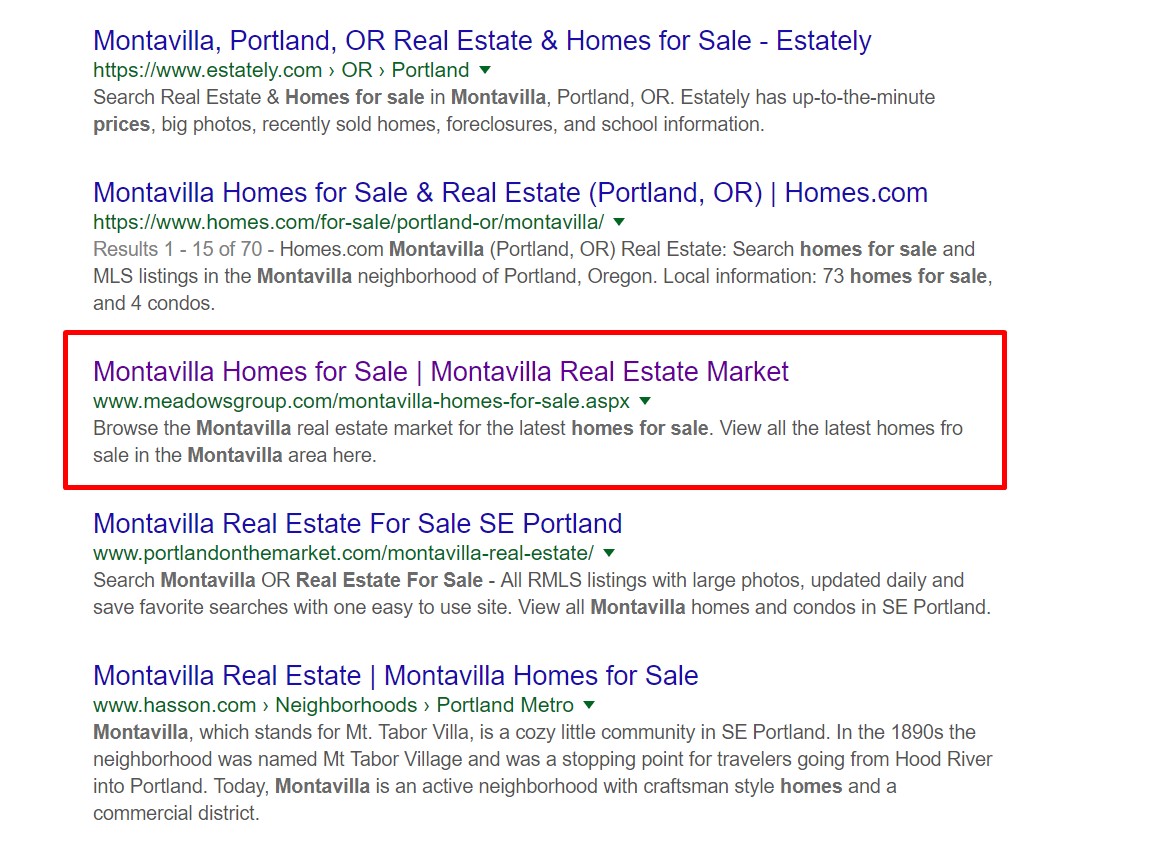
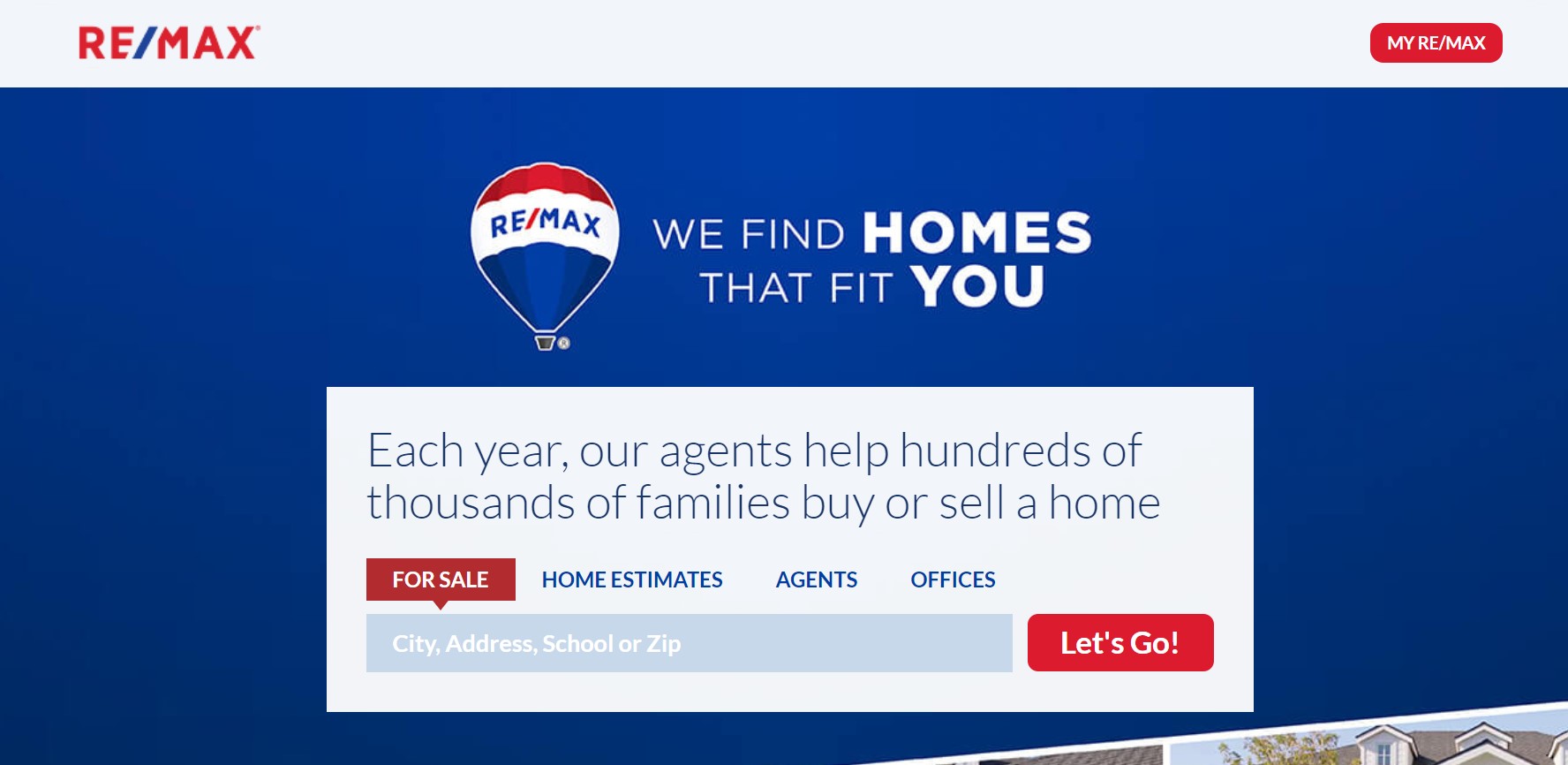
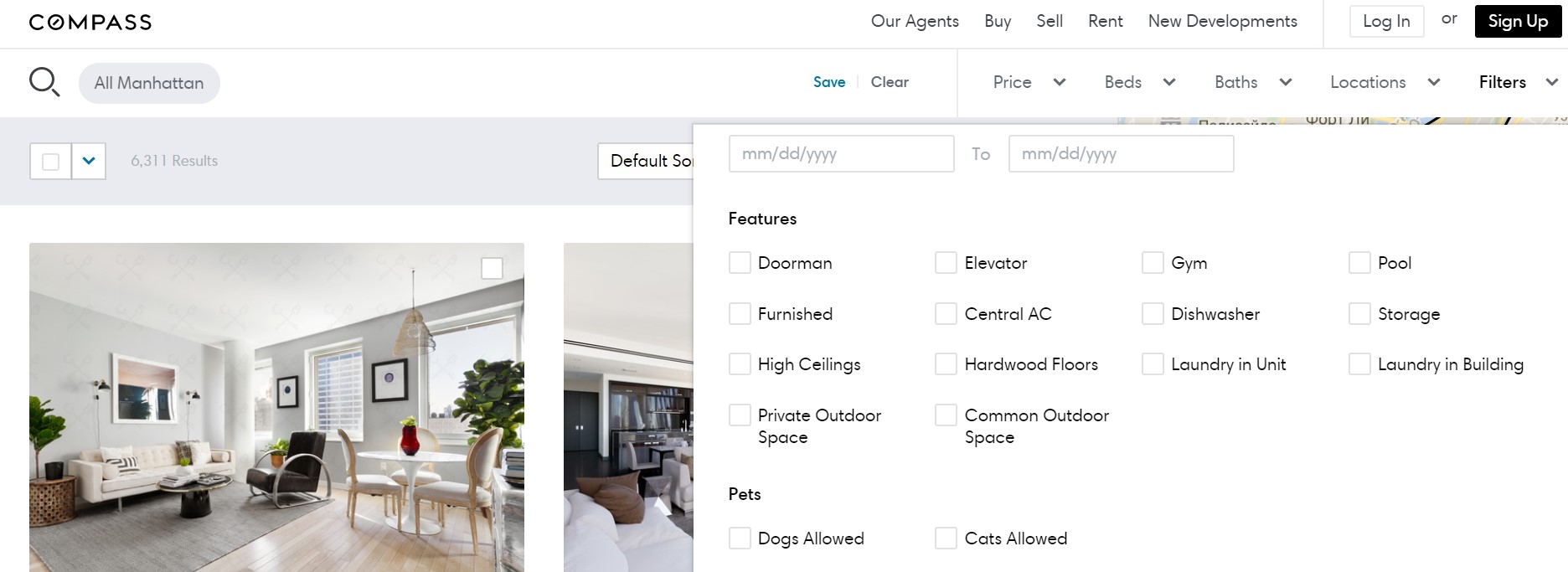
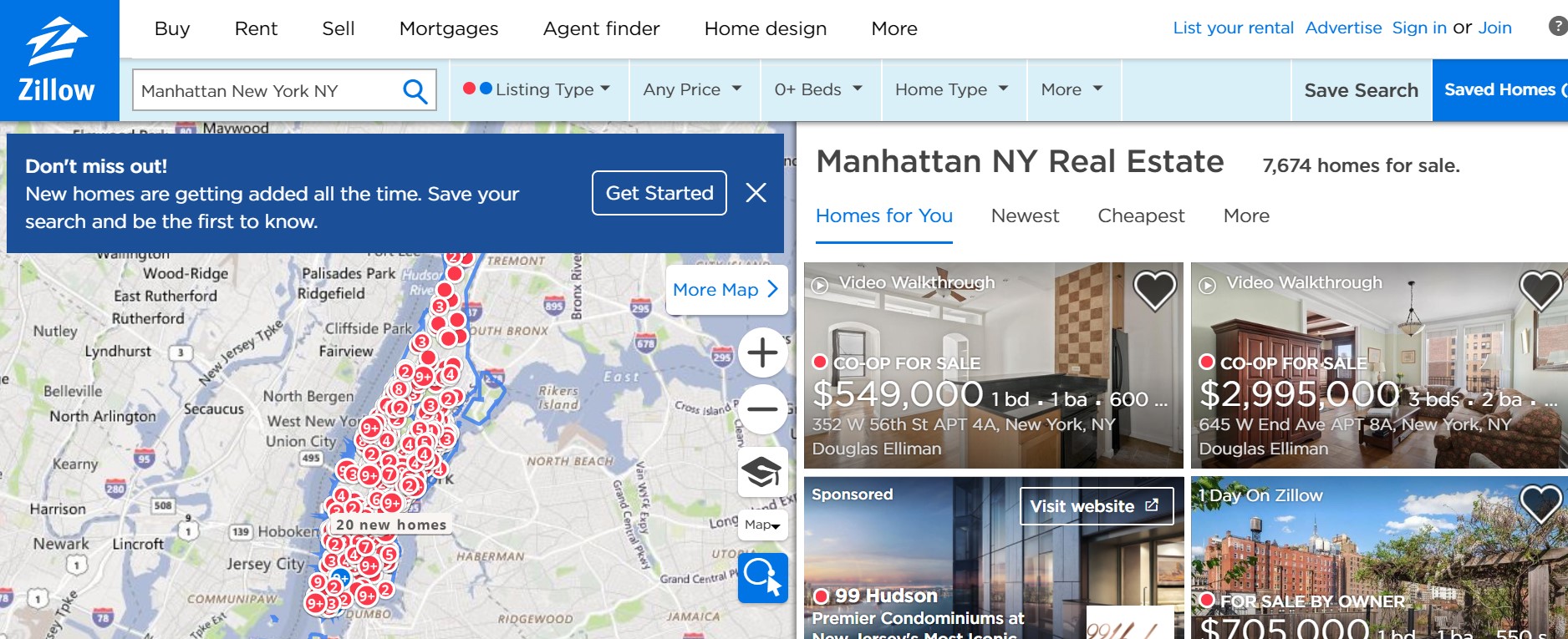
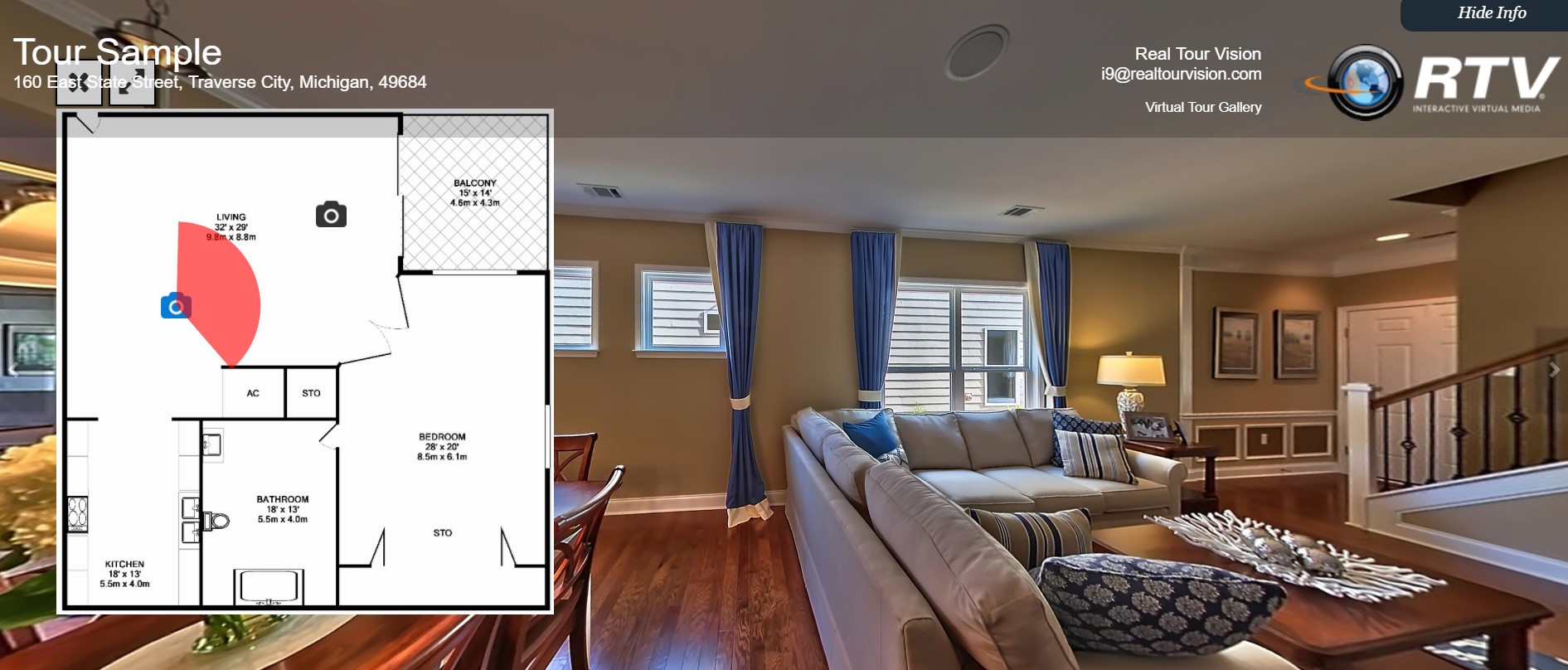
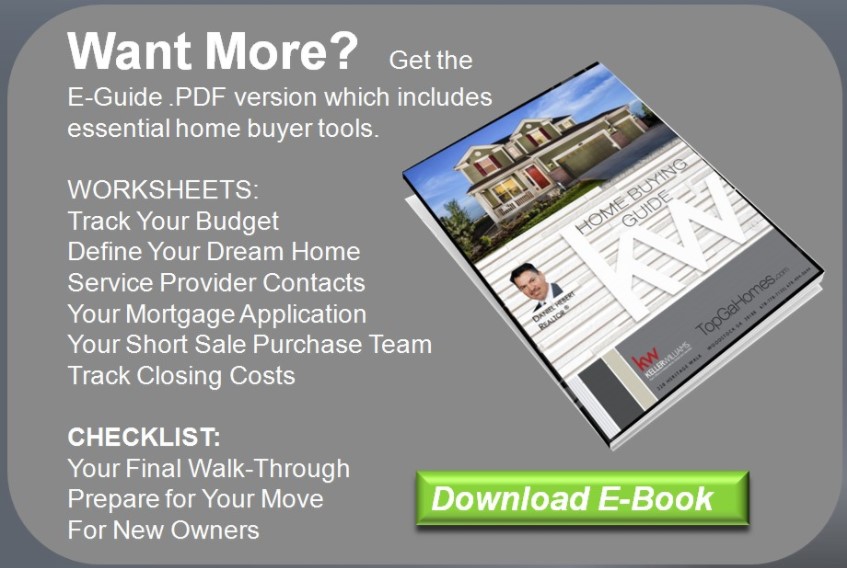
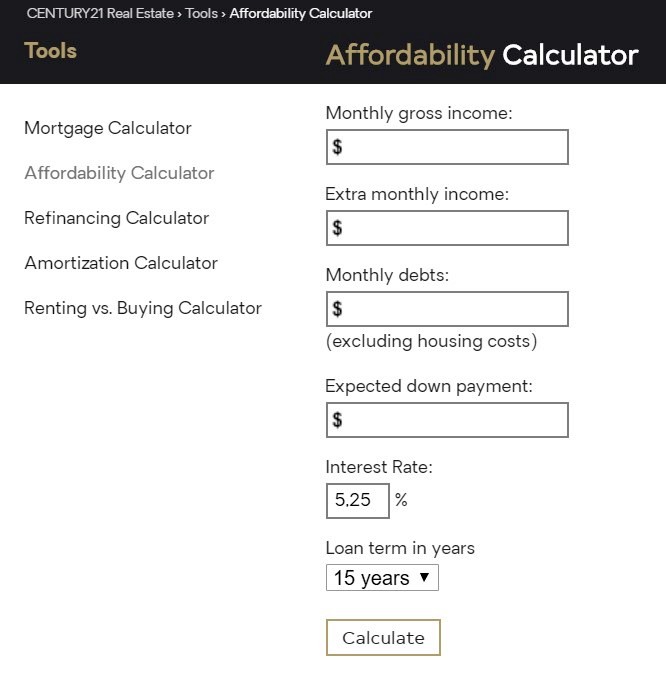
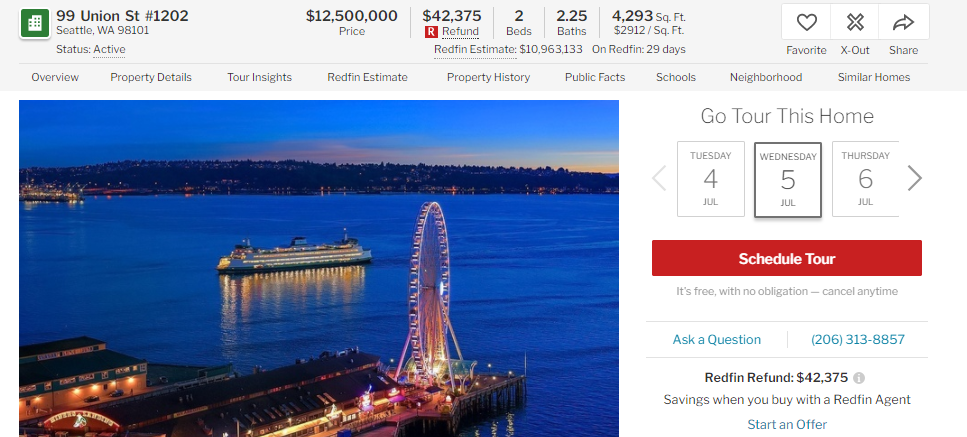



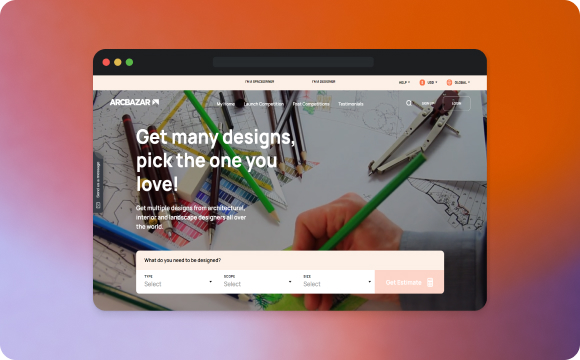
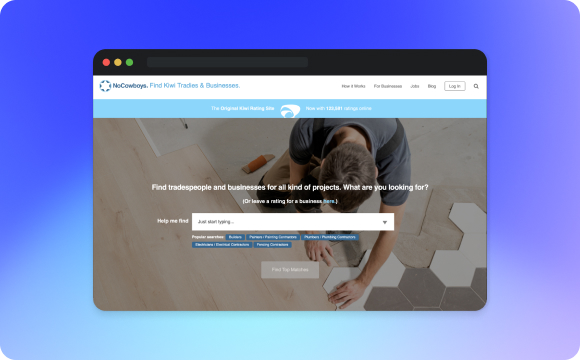



 Sign in with Google
Sign in with Google
Comments (0)